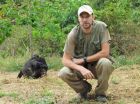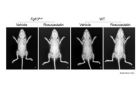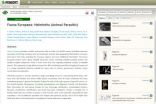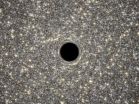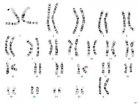(Press-News.org) New studies of ancient DNA are shifting scientists' ideas of how groups of people migrated across the globe and interacted with one another thousands of years ago. By comparing nine ancient genomes to those of modern humans, Howard Hughes Medical Institute (HHMI) scientists have shown that previously unrecognized groups contributed to the genetic mix now present in most modern-day Europeans.
"There are at least three major, highly differentiated populations that have contributed substantial amounts of ancestry to almost everybody that has European ancestry today," says David Reich, an HHMI investigator at Harvard Medical School. Those include hunter-gatherers from western Europe, the early farmers who brought agriculture to Europe from the Near East, and a newly identified group of ancient north Eurasians who arrived in Europe sometime after the introduction of agriculture. That means there were major movements of people into Europe later than previously thought. The team, led by Reich and Johannes Krause at the University of Tübingen in Germany, reported their findings in the September 18, 2014, issue of the journal Nature.
In the last five years, genetic evidence has demonstrated that migrants from the Near East brought agriculture with them to Europe when they arrived about 8,500 years ago. But the genomes of present-day Europeans show signs that they come from more than just the indigenous hunter-gatherers and these early farmers.
Two years ago, Reich's group uncovered genetic evidence that most present-day Europeans are a mixture of groups related to southern Europeans, Near Easterners, and a third group most closely related to Native Americans. "That was a crazy observation, but it's very strong statistically," Reich says. "We argued that this is because of the contribution of an ancient north Eurasian population some of whose members contributed to the peopling of the Americas more than 15,000 years ago, and others of which later migrated to Europe."
To clarify that early history, Reich's team, including more than 100 collaborators worldwide, collected genetic data from nine ancient skeletons and 203 present-day populations living all over the world. Collaborators isolated human DNA and sequenced the complete genomes from the bones of a 7,000-year old skeleton found in Germany and eight skeletons of hunter-gatherers who lived in Luxembourg and Sweden about 8,000 years ago. They compared those genomes to those of the 2,345 people in their contemporary populations.
That required developing new computational methods for genetic analysis. "Figuring out how these populations are related is extremely hard," Reich says. "There's a lot that happened in Europe in the last 8,000 years, and this history acts like a veil, making it difficult to discern what happened at the beginning of this period. We had to find statistics that were able to tell us what happened deep in the past without getting confused by 8,000 years of intervening history, when massive and important events occurred."
"What we find is unambiguous evidence that people in Europe today have all three of these ancestries: early European farmers who brought agriculture to Europe, the indigenous hunter-gatherers who were in Europe prior to 8,000 years ago, and these ancient north Eurasians," Reich says. Further analyses showed that describing present-day Europeans as a mixture of the three populations is a good fit for most, although not all, populations.
When the study began, the ancient north Eurasian population was a "ghost population" – identified based on genetic patterns without any ancient DNA. But in 2013, another group analyzed DNA from two skeletons found in Siberia, one from 24,000 years ago and one from 17,000 years ago, and found that it shared genetic similarities with Europeans and North Americans. The ghost, Reich says, had been found.
Although DNA from ancient north Eurasians is present in nearly all modern Europeans, Reich's team did not find it in their ancient hunter-gatherers or the ancient farmers. That means the north Eurasian line of ancestry was introduced into Europe after agriculture had been established, a scenario most archaeologists had thought unlikely.
"We have this amazing observation that only two ancestries are represented among the first farmers, from about 7,000 to 5,000 years ago. And then suddenly everybody today has ancient north Eurasian ancestry," Reich says. "So there must have been a later movement of this ancestry into Europe."
Anthropologists have long thought that densely settled populations would be resistant to the arrival of new groups. "But this is hard evidence that exactly such a major migration occurred," Reich says. "It's very important because it's a major contributor to Europeans today." The time of the ancient north Eurasians' arrival remains to be determined, but Reich says their later-than-expected movement into Europe might help explain the complex mix of languages that exists there today.
The team's data also reveals that the first farmers to reach Europe from the Near East had ancestors from a previously unidentified lineage, which Reich's group named the Basal Eurasians. Basal Eurasians were the first people to separate from the larger group of non-Africans, before other non-African groups diversified. Reich says that attempts to identify the first group to split from the non-Africans had always been puzzling: genetic evidence indicates that this is likely to be Europeans or Near Easterners, even though some archaeological evidence has indicated that people were in New Guinea and Australia before they were Europe.
The new analysis shows that the Near Easterners who came into Europe 8,000 years ago brought with them a strand of ancestry that had separated before the ancestors of Australian aborigines separated from the indigenous people of Europe. "That population must have been hanging out somewhere in the Near East for a very long time," Reich says. Now he would like to know how that population fits into the archaeological history of the region. Ancient DNA from Basal Europeans, if found, might lead to new revelations about early human history.
INFORMATION:
Modern Europeans descended from three groups of ancestors
2014-09-17
ELSE PRESS RELEASES FROM THIS DATE:
Chimpanzee lethal aggression a result of adaptation rather than human impacts
2014-09-17
In the 1970s, Jane Goodall's reports of chimpanzee violence caught the attention of a global audience. Since then, many people have compared chimpanzee intergroup aggression to primitive warfare and have argued that chimpanzee violence is an adaptive strategy that gives the perpetrators an edge. Others have argued that lethal aggression is the consequence of human activities such as provisioning (artificial feeding) by researchers or habitat destruction. A new study of the pattern of intergroup aggression in chimpanzees and their close relatives, bonobos (also called pygmy ...
Researchers use iPS cells to show statin effects on diseased bone
2014-09-17
Skeletal dysplasia is a group of rare diseases that afflict skeletal growth through abnormalities in bone and cartilage. Its onset hits at the fetal stage and is caused by genetic mutations. A mutation in the gene encoding fibroblast growth factor receptor 3 (FGFR3) has been associated with two types of skeletal dysplasia, thanatophoric dysplasia (TD), a skeletal dysplasia that cause serious respiratory problems at birth and is often lethal, and achondroplasia (ACH), which causes stunted growth and other complications throughout life. Several experimental treatments have ...
Math model designed to replace invasive kidney biopsy for lupus patients
2014-09-17
COLUMBUS, Ohio – Mathematics might be able to reduce the need for invasive biopsies in patients suffering kidney damage related to the autoimmune disease lupus.
In a new study, researchers developed a math model that can predict the progression from nephritis – kidney inflammation – to interstitial fibrosis, scarring in the kidney that current treatments cannot reverse. A kidney biopsy is the only existing way to reach a definitive diagnosis of the damage and its extent.
The model could also be used to monitor the effectiveness of experimental treatments for inflammation ...
Large study reveals new genetic variants that raise risk for prostate cancer
2014-09-17
In an analysis of genetic information among more than 87,000 men, a global team of scientists says it has found 23 new genetic variants – common differences in the genetic code -- that increase a man's risk for prostate cancer. The so-called "meta-analysis," believed to be the largest of its kind, has revealed once hidden mutations among men in a broad array of ethnic groups comprising men of European, African, Japanese and Latino ancestry.
The meta-analysis combined information from smaller studies, according to William B. Isaacs, Ph.D., a genetic scientist at the Brady ...
Babies learn words differently as they age, researcher finds
2014-09-17
COLUMBIA, Mo. – Research has shown that most 18-month-olds learn an average of two to five new words a day; however, little is known about how children process information to learn new words as they move through the preschool years. In a new study, a University of Missouri researcher has found that toddlers learn words differently as they age, and a limit exists as to how many words they can learn each day. These findings could help parents enhance their children's vocabularies and assist speech-language professionals in developing and refining interventions to help children ...
Contributions on Fauna Europaea: Data papers as innovative model on expert involvement
2014-09-17
Fauna Europaea started in 2000 as an EC-FP5 four-year project, delivering its first release in 2004. After 14 years of steady progress and successful participations in several EC projects, as a part of the EC-FP7 European Biodiversity Observation Network project (EU BON), to increase the general awareness of the work done by the contributors and to extend the general dissemination of the Fauna Europaea results, the Biodiversity Data Journal has applied its novel e-Publishing tools to prepare data papers for all 56 major taxonomic groups.
Fauna Europaea provides a public ...
Big surprises can come in small packages
2014-09-17
Astronomers using the NASA/ESA Hubble Space Telescope have found a monster lurking in a very unlikely place. New observations of the ultracompact dwarf galaxy M60-UCD1 have revealed a supermassive black hole at its heart, making this tiny galaxy the smallest ever found to host a supermassive black hole. This suggests that there may be many more supermassive black holes that we have missed, and tells us more about the formation of these incredibly dense galaxies. The results will be published in the journal Nature on 18 September 2014.
Lying about 50 million light-years ...
A link between Jacobsen syndrome and autism
2014-09-17
SAN DIEGO, Calif. (Sept. 17, 2014)— A rare genetic disorder known as Jacobsen syndrome has been linked with autism, according to a recent joint investigation by researchers at San Diego State University and the University of California, San Diego. In addition to suggesting better treatment options for people with Jacobsen syndrome, the finding also offers more clues into the genetic underpinnings of autism.
Jacobsen syndrome affects approximately 1 in 100,000 people, according to the National Institutes of Health. It occurs in a person when there is a deletion at the end ...
Lack of facial expression leads to perceptions of unhappiness, new OSU research shows
2014-09-17
CORVALLIS, Ore. – People with facial paralysis are perceived as being less happy simply because they can't communicate in the universal language of facial expression, a new study from an Oregon State University psychology professor shows.
The findings highlight the important role the face plays in everyday communication and indicates people may hold a prejudice against those with facial paralysis because of their disability, said Kathleen Bogart, an assistant professor of psychology in the College of Liberal Arts at Oregon State University.
"People are more wary and ...
Entrepreneurs aren't overconfident gamblers
2014-09-17
Leaving one's job to become an entrepreneur is inarguably risky. But it may not be the fear of risk that makes entrepreneurs more determined to succeed. A new study finds entrepreneurs are also concerned about what they might lose in the transition from steady employment to startup.
In Entrepreneurship and Loss-Aversion in a Winner-Take-All Society, Professor John Morgan at UC Berkeley's Haas School of Business and co-author Dana Sisak, assistant professor at the Erasmus University Rotterdam, focused on the powerful impact of loss aversion.
Loss aversion, or the fear ...
